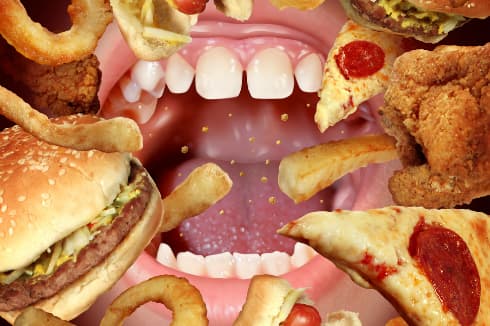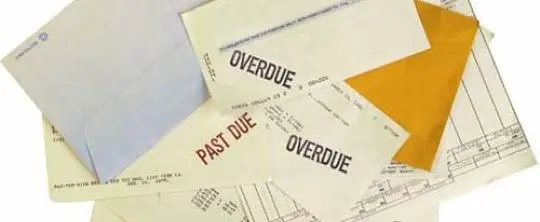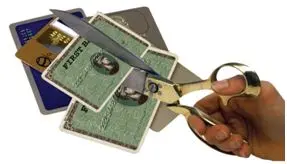
Get rid of your debt faster with debt relief
Choose your debt amount
Or speak to a debt consultant 844-731-0836
- 7 min read
Eliminating Unhealthy Debts

| Bills.com Budget Guide |
|---|
| The Need for a Budget |
| Creating a Personal Budget |
| Your Budget Worksheet |
| Analyze Your Cash Flow |
| Eliminating Unhealthy Debts |
| Setting Long Term Goals |
| On the Road to Financial Freedom |
Healthy vs. Unhealthy Debts
Proper debt management is an essential component of budgeting. While just about everyone has some degree of debt, only five types of debt can be healthy:
- Student Loans - Because they further one’s education and increase future earning potential.
- Mortgages - Because home ownership is an asset that can build equity and net worth.
- Necessary Medical Bills - Because one’s health always takes priority.
- Business Debts - Because they are often necessary to build a business and future earnings.
- Car Payment- Because the only way to purchase a car, sometimes, is to finance the purchase.
Keep in mind that healthy debts are not areas where you are given carte blanche to spend unwisely. Only take out student loans for education that furthers concrete goals. Take out a mortgage only if you can afford it and don’t buy a more expensive house than you need. Don’t take on a car payment that eats up too large a percentage of your budget. If you are running up debt to capitalize a business, make sure that you have a solid business plan and business budget.
Other types of debt can create more problems than they solve, especially credit card debt. Credit cards are convenient and necessary in our society. Even when you are not running up debt, you need a credit card to shop online, rent a car, or reserve a hotel room; most people need to carry at least one credit card. Having too many credit cards is bad, especially if you use them to run up high debt. Carrying running credit card balances means that you are potentially paying hundreds of dollars in unnecessary interest fees for purchases that may have no lasting value.
This emphasis on lasting value is the surest determinant of whether a debt is healthy or unhealthy. Healthy debt provides lasting value and is aligned with a long-term goal (e.g., a mortgage enables you to become a homeowner). Even under these circumstances, you should not commit to more debt than you can afford to service each month.
To avoid excessive credit card debt, ask yourself -- before you make a credit card purchase -- if you will be able to pay the bill when it comes. If the answer is “no,” then don’t make the purchase. You also should make absolutely certain that you do not use revolving debt (credit cards, personal loans, etc.) for assets that can depreciate or will be “used up” (electronics, clothes, CDs, food, etc.). These assets will be gone long before the debt is, and the obligation still will be hanging over your head. Also, the interest you pay on these purchases inflates the cost. Would you buy the item if you viewed the cost not as the initial purchase price, but the cost you pay including all the interest? Your $40 pair of jeans could actually cost you $80 if it takes you years to pay it off.
Paying off Credit Card Debts

If you are carrying a credit card balance, you should look to immediately set aside your available cash to pay off your unhealthy debts and avoid paying unnecessary interest. Use your budget as a guide to reduce your expenses and become debt free. More importantly, you should immediately limit your credit card use, so you don’t accumulate more debt. This should take a priority over saving until the unhealthy debt is gone.
Credit card pay-off strategies
- Paying only the minimum payment each month should be avoided, if possible. If you are able to pay more than the minimum payment, you can save hundreds or thousands in interest. Credit card interest rates can go as high as 29%-39%! The larger your monthly payment, the faster you will pay off the debt and the less interest you will pay. For example, take a credit card debt of $10,000 with a 22% interest rate. If you continued to only make the minimum payments (4% of the monthly balance), it will cost you $18,216 and take 14 years to become debt free, largely because the minimum payment drops each month as you pay down your debt.
- Paying a constant amount each month could save you thousands and will clear out your debt in far less time than paying the minimum amount. For the same scenario above ($10,000 debt and 22% interest rate), a constant payment of $400 per month would cost only $13,094, taking you 3 years to become debt free.
If you are carrying balances on multiple credit cards and can afford more than the minimum payment, you should consider the following strategies. To be effective, both strategies require you to dedicate paying the same monthly amount towards your debt until all debts have been paid off. As you pay off one card, use the funds you were paying on that card to paying off the next card. Maintaining the same monthly amount (or even increasing the pay-down amount) will help you get out of debt that much faster and reduce the total cost of your debt.
- Avalanche-- The avalanche method involves paying off your credit cards in the order of the highest interest rates. Once you have decided how much you can afford each month, allocate enough money to only pay off the minimum payment on each credit card. Then apply all the remaining funds to paying off the card with the highest interest rate. Once the first credit card has been paid off, apply every dollar you were using to pay off the highest-interest card and add it to what you were already sending to the second highest-interest credit card. Keep following this strategy and continuing paying the same amount each month towards your debt until all debts have been cleared. Using the avalanche method can result in greater savings by paying less interest in the long run.
- Snowball -- The snowball method involves paying off the lowest debt amount first. Like the avalanche method, budget enough money to pay off the minimum payment on all cards. Then apply any remaining funds towards paying off the credit card with the lowest balance. Once you have paid off the first credit card, continue paying the same monthly amount you started with. Follow the same strategy s the first credit card: Pay only the minimum payments on all other cards while using all the remaining funds to pay off your second lowest debt. Although the snowball method may be more costly than the avalanche method, seeing even a small debt eliminated often helps motivate people to stick to the discipline of paying down debts.
If you are struggling to pay even the minimum payments on your credit cards, there are other alternatives to help you become debt free.
- Use your savings and retirement funds to pay off as much debt as possible. Start by paying off the account carrying the highest interest rate (the higher the interest rate, the more of your money is being eaten up without paying off principal), and then work your way down to the account with the lowest rate.
- Unless your employer matches your 401(k) contributions, stop contributing temporarily. It makes more financial sense to pay down your high-interest debt first, particularly when outstanding credit card balances have interest rates of 25% or higher. Pay as much towards your high-interest debts as you can with the money you were using to invest into the company 401(k). Paying off these debts can be the equivalent of earning up to a 30% return on your 401(k) investments!
- If you own a home, consider getting a home equity loan or even refinance your mortgage to pay off your unsecured debts. Bills.com has a whole refinance resource center to help you evaluate and qualify for a refinance loan, if this is a good decision for you. Using the proceeds from the home equity loan to pay your unsecured debts will dramatically help your financial situation. In almost every case, this type of loan will have much lower interest rates than your unsecured debts, and it typically is tax deductible – making the effective interest rate even lower.
- If none of the methods above are available to you, you should seek professional debt management assistance. A credit card counseling program or a debt settlement program may be necessary in order for you to clear out your debt. As an option of last resort, bankruptcy exists if you can demonstrate a severe enough hardship to qualify.
Back: Analyze Your Cash Flow Next: Setting Long Term Goals
Download the Bills.com Personal Budget Guide & Budget Worksheets
Get the full printable Bills.com budget guide:

Get rid of your debt faster with debt relief
Take the first step towards a debt-free life with personalized debt reduction strategies.
Choose your debt amount
Or speak to a debt consultant 844-731-0836